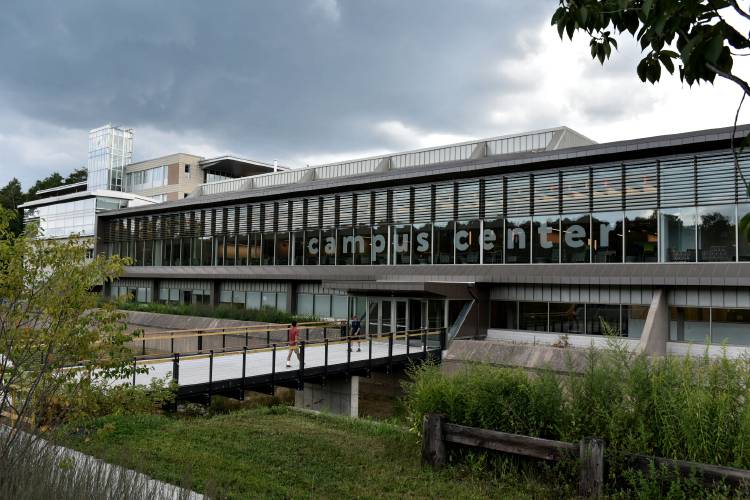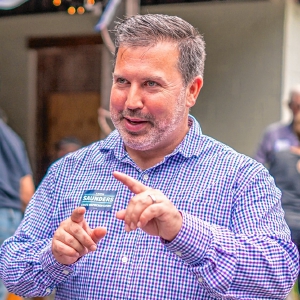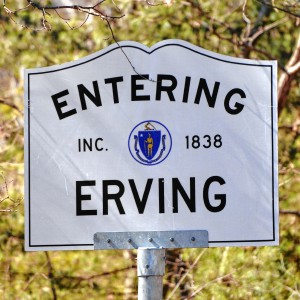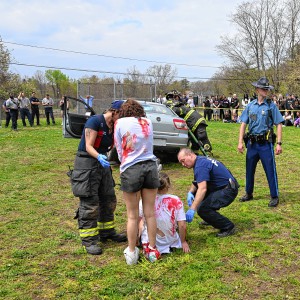Now free for some, community colleges see enrollment climb

Holyoke Community College is reporting a 4.4% increase this fall over the 3,550 students at the college in the fall of 2022. GAZETTE FILE PHOTO
| Published: 12-31-2023 5:00 PM |
HOLYOKE — At Holyoke Community College this fall, 3,706 students are enrolled and receiving credits for classes they are taking. That’s a 4.4% increase over the 3,550 students at the college in the fall of 2022.
The jump in enrollment mirrors what is happening across the state’s 15 community colleges, where the number of students shot up in the fall semester, driving the first undergraduate enrollment increase at Massachusetts public colleges and universities in a decade, officials announced earlier in December.
There were 152,739 undergraduates enrolled this fall across state universities, University of Massachusetts schools and community colleges, an increase of 2.9% compared to fall 2022, according to new Department of Higher Education data.
While this marks the first time total undergraduate enrollment was higher than the previous year since 2013, the trend was not universal across all campuses. The number of undergraduates dropped 1% at UMass campuses and 0.6% at state universities from fall 2022 to fall 2023, though officials said the decline at state universities was less than in recent years.
A sizable single-year increase — 8% — at community colleges drove the overall trend upward, the data show. Officials said each of the state’s 15 community colleges experienced some enrollment growth.
The increase comes as the UMass system recently announced the creation of the UMass Community College Advantage Scholarship, offering $5,000 annual scholarships for community college graduates finishing in top 10% of their class.
Chris Yurko, media relations manager at Holyoke Community College, wrote in an email that the reasons for the growth could be attributed in part to the COVID-19 pandemic emergency ending.
“People are feeling more comfortable being in close proximity to other people,” Yurko said. “All the public colleges and universities in the state also ended their COVID vaccination requirements, which was presumed to be a barrier to enrollment for many people.”
Article continues after...
Yesterday's Most Read Articles
In addition, Yurko said, MassReconnect, the new state program for free community college for students 25 and older, has helped. Currently, 348 students at Holyoke Community College were awarded those grants.
The increase in students is not expected to be an aberration either, Yurko said, as the college predicts continuing growth in enrollment for next spring. He points to registration for spring being about 30% in student headcount compared to the same time last year. New student registrations are up 50%, or 270, so far and continuing registrations are up 26%, or 2,000.
Greenfield Community College also has seen an uptick in enrollment. In September, GCC reported 1,554 students were enrolled for the fall semester, representing an increase of nearly 10% over the previous year.
Lawmakers and Gov. Maura Healey have embraced using state dollars to make higher education more affordable, starting with community colleges. The fiscal year 2024 state budget deployed $20 million to cover any unmet community college costs for students 25 and older without a college degree.
Healey said in a statement Dec. 19 that her team is “thrilled to hear that our efforts to expand access to higher education are showing results.”
“This enrollment data supports anecdotes that I’ve been hearing from students, faculty, staff, and families across the commonwealth – students are already taking advantage of the historic new opportunities available to them under the Healey-Driscoll administration,” Education Secretary Patrick Tutwiler said. “It’s great to see this turn of the tide in the enrollment at our institutions of public higher education, and wonderful to consider the new perspective, energy, and skills these additional students will bring to these institutions, their communities, and our state.”
Enrollment had been falling for nearly a decade before the latest jolt, driven by demographic changes and by an apparent wariness among some students to take on the rising costs of earning a degree.
The fall 2023 tally is still about 44,000 students, or 22%, below enrollment during the fall 2013 semester, which was the last time the trend was still moving upward.
Officials plan to publish more detailed data early next year about student race and ethnicity, gender, age and other demographic factors influencing enrollment. They also said they will “share more information on the impact of MassReconnect and other new programs to enrollment” in 2024.
“Today’s enrollment report is good news, but it only represents a first step. The department remains committed to ensuring that all students who enroll in college complete their education,” Higher Education Commissioner Noe Ortega said. “Postsecondary success remains the north star for the department.”
Meanwhile, the UMass Community College Advantage Scholarship will allow community college students at the top of their classes to receive a minimum of $5,000 per year above federal and private financial aid if they enroll at the UMass flagship campus in Amherst, as well as the Boston, Dartmouth and Lowell campuses.
The scholarship is designed to incentivize highly talented community college students to finish their associate degrees and then complete their bachelor’s degrees at UMass, while also addressing two challenges facing public higher education in the state. Those are providing equitable access to historically underrepresented groups of students, in light of the recent U.S. Supreme Court decision on race-based admissions, and strengthening the state’s talent pipeline as the number of high school graduates in Massachusetts is projected to decline in the coming years, at the same time as the existing population ages out of the workforce and more younger people leave the state.
“We want to send a clear message that UMass welcomes highly talented community college graduates to continue their pursuit of a college degree on our nationally ranked Amherst, Boston, Dartmouth and Lowell campuses,” UMass President Marty Meehan said in a statement. “We believe this initiative will lead to more community college graduates choosing to finish their four-year degree at UMass, which will accelerate their upward economic trajectory and strengthen the commonwealth’s workforce.”
On the day the Healey administration announced the enrollment trend, supporters of a bill that would invest significantly in higher education announced a new campaign to drum up support for the so-called CHERISH Act.
Ads are hitting the airwaves this month, and feature professors at Massachusetts’ public colleges and universities discussing how provisions in the bill would help students and faculty.
Among those in the ads is Phyllis Keenan, a math professor at Greenfield Community College.
“The high cost of college is making it harder for many of my students to complete their degree on time, delaying their ability to access the good-paying careers they need to provide for their families,” Keena said in the ad. “The CHERISH Act can fix this by providing debt-free higher education.”
The ads are sponsored by the Massachusetts Teachers Association, which has thrown its weight behind the bill. A spokesperson for the union wouldn’t disclose the exact process of the ads, other than to say it has cost a “significant amount.”
The CHERISH Act aims to support debt-free higher education, beginning in fiscal year 2024 with debt-free community college. It would also ensure eligibility for state health care and retirement benefits for adjunct faculty and part-time staff, and institute minimum funding levels for public higher education that would be phased in over five years and prohibit tuition and fee increases during this implementation.
Material from the State House News Service was used in this report.

 Franklin County reps speak to House budget amendments
Franklin County reps speak to House budget amendments Employee pay, real estate top Erving Town Meeting warrant
Employee pay, real estate top Erving Town Meeting warrant ‘Arrive Alive’ shows Athol High School students the dangers of impaired driving
‘Arrive Alive’ shows Athol High School students the dangers of impaired driving Work on Pinedale Avenue Bridge connecting Athol and Orange to resume
Work on Pinedale Avenue Bridge connecting Athol and Orange to resume